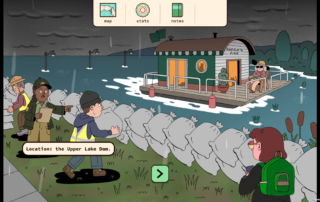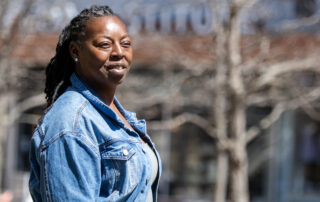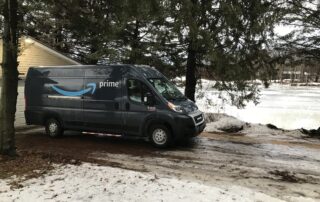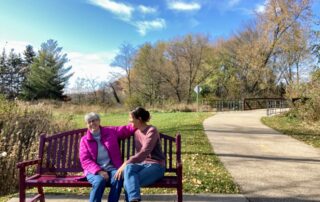When Ferguson, a 10-year-old miniature donkey, came into Angela Landowski’s care, his front left hoof was in terrible condition. A later-discovered genetic deformity and a lack of hoof trimming had caused a large abscess to form, forcing the donkey to walk on the side of his foot.
“His feet were horrible,” said Landowski, owner of Holy Land Donkey Haven, a donkey rescue in Fond du Lac. “I knew it came to a point to where it was going to have to be amputated.”
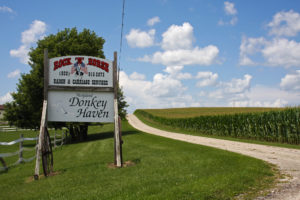
Holy Land Donkey Haven in Fond du Lac, Wisconsin offers respite to neglected, unwanted donkeys. (Jenny Peek/WPR)
Landowski enlisted the help of the University of Wisconsin-Madison School of Veterinary Medicine, and they agreed.
“They took some more X-rays, they agreed that there was nothing more we could do,” Landowski said.
So, on Apr. 18, UW-Madison veterinarian Samantha Morello amputated Ferguson’s foot. After weeks of healing, Amy Paulios, a prosthetist at UW Health, fit him with his prosthesis.
It was a groundbreaking surgery for both Morello and Paulios.
According to UW News, it was the first amputation with a prosthesis at UW’s large animal hospital. Amputations, like Ferguson’s, are complex and rarely done, because of the amount of weight large animals bare on their limbs.
They are also incredibly expensive.
Landowski estimates that the care, surgery and prosthesis would have cost a minimum of $40,000, but due to the nature and rarity of the operation, a majority of the services were donated.
“We lucked out with Ferguson,” Landowski says. “He spent two months at the university and they only charged us half of what they normally do … it cost us about $8,000 all together what we put out of our pocket, but if we had to put all of that money out you’re talking about $40,000 at least, minimum. But we have, like I say, the right people that wanted to help.”
Now, nearly seven months after the surgery, Ferguson is back on his hooves and doing great.
He walks, runs and socializes with the 20 other donkeys that currently call Holy Land home.
Landowski says the change in his behavior is almost unrecognizable.
“He’s gotten more braver on what he does, he’s able to make decisions more on where he wants to go, which he never did before … he wants to spend more time socializing with the other donkeys through the fence, which he never did before,” Landowski said. “It was just, he wasn’t happy, plus he was living in pain.”
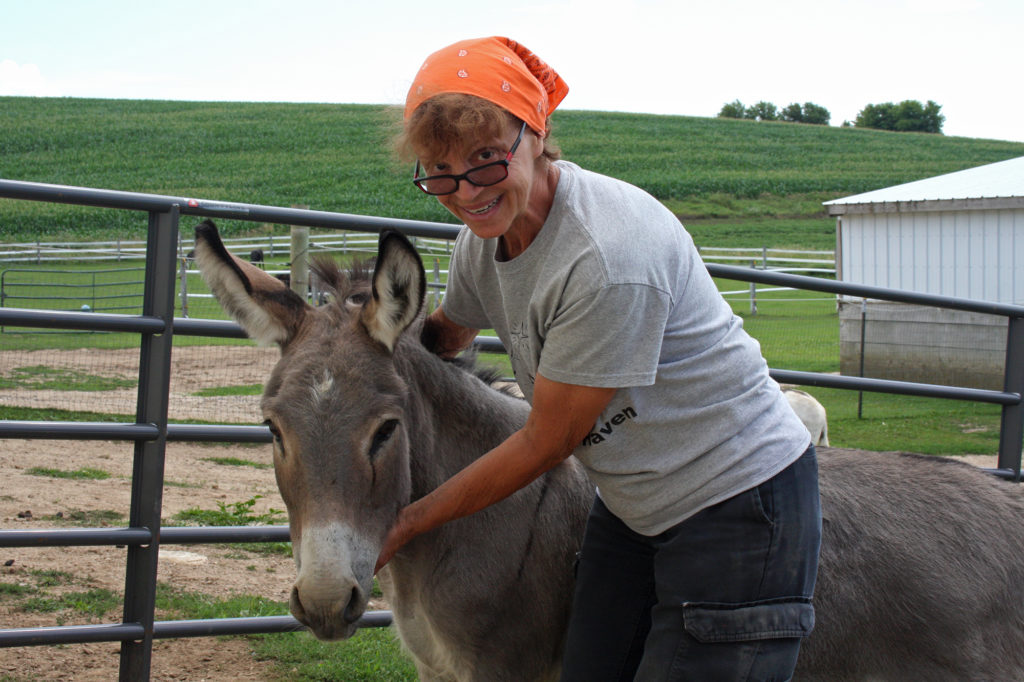
Angela Langoski poses with her rescue donkey Ferguson. To date, Langoski has rescued 89 donkeys. (Jenny Peek/WPR)
Landowski likens the change in his demeanor to a person who’s lost a limb: “He’s proud of who he is, it’s just like a person, people that have lost limbs and everything, and it’s a terrible thing for someone to go through, but when they realize they can get around, that they can do things, they actually wind up doing more than what they did before they actually lost the limbs, because it’s like, ‘what do I have to lose?’ And I think he’s gotten that attitude, he has nothing to lose and I think that’s awesome.”
It’s success stories like Ferguson’s that keep Landowski going.
“It’s just when you see something like that it’s like you know what? It’s worth it. I call it being selfish myself, the satisfaction I get, the feeling I get, but it’s worth it,” she said.
Since she opened Holy Land Donkey Haven in 2011, Landowski has rescued 92 donkeys. And it’s a number that’s likely to grow.
“We don’t turn any donkey away, like I say this is what we’re here for, they eat before I eat, they got to the vet before I go to the doctor, because that’s what we’re here for, we’re here to take care of them.”
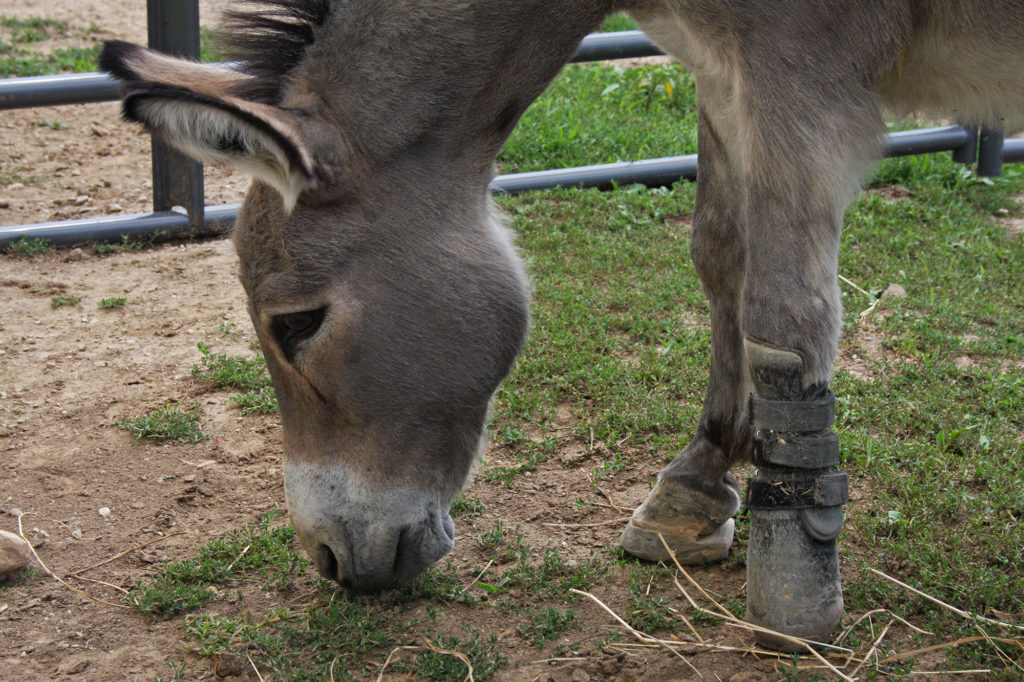
Ferguson munches on grass at Holy Land Donkey Haven. His surgery and prosthesis was the first of its kind at UW-Madison’s large animal hospital. (Jenny Peek/WPR)
==
SONG: “Stumptown” by Nickel Creek


